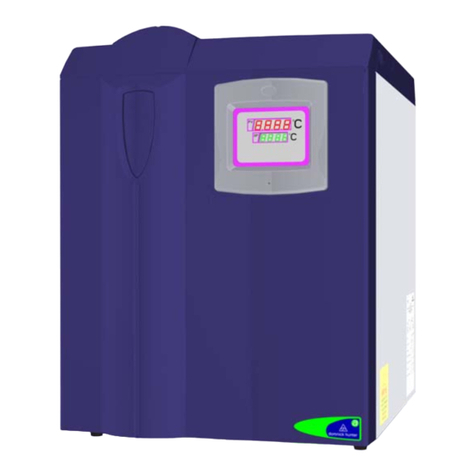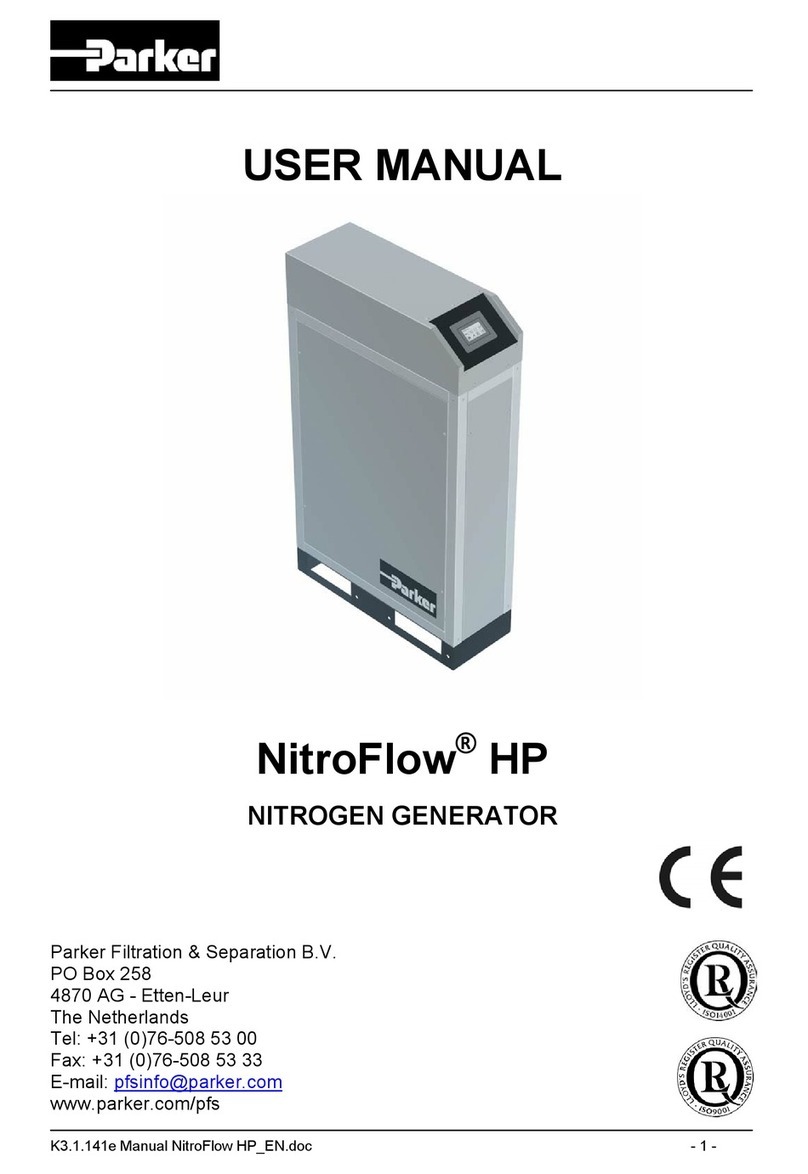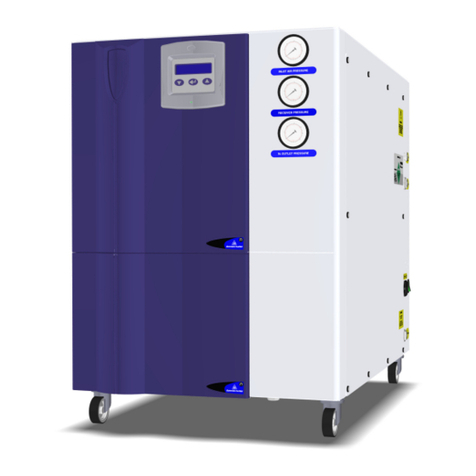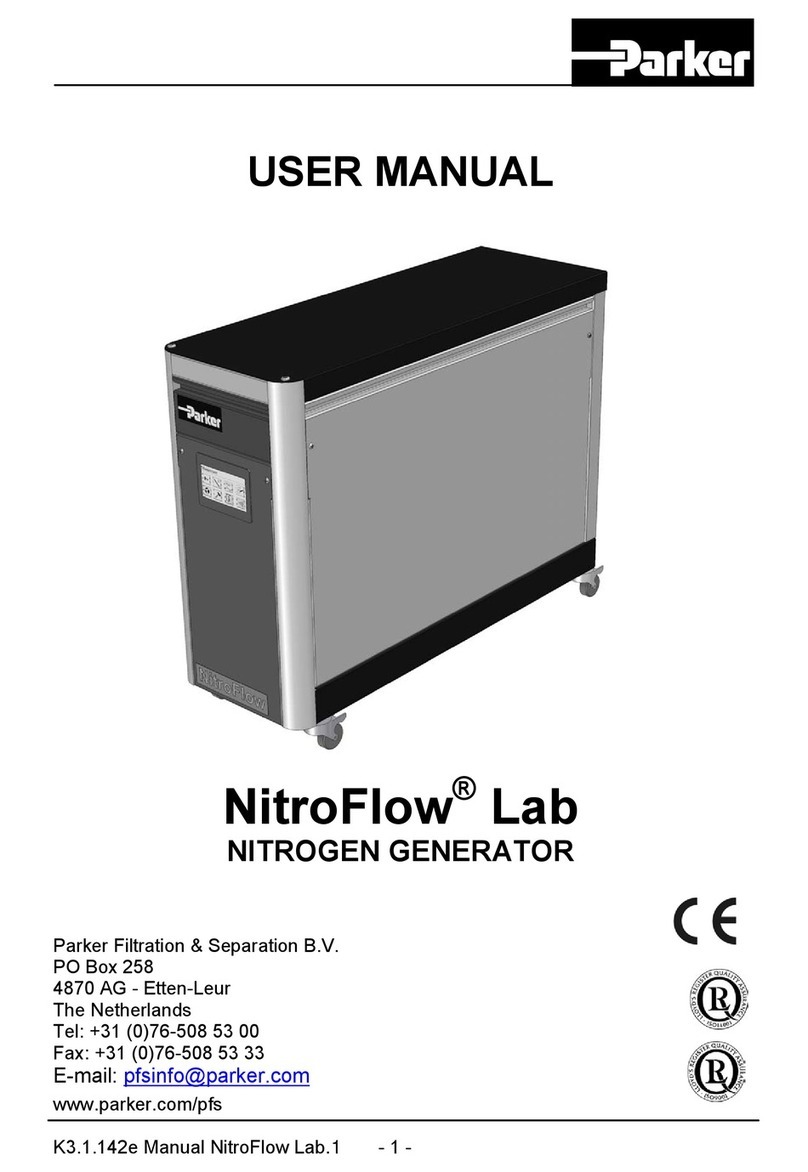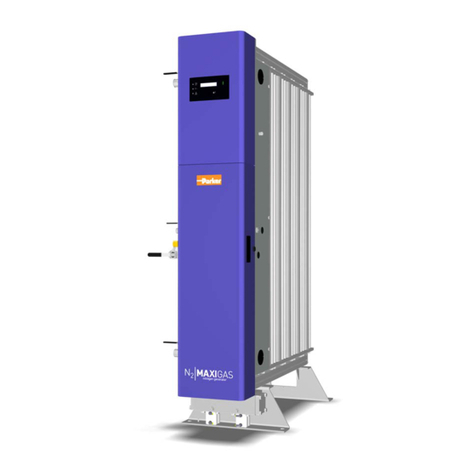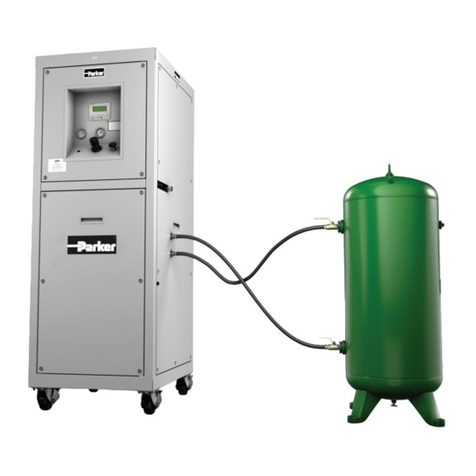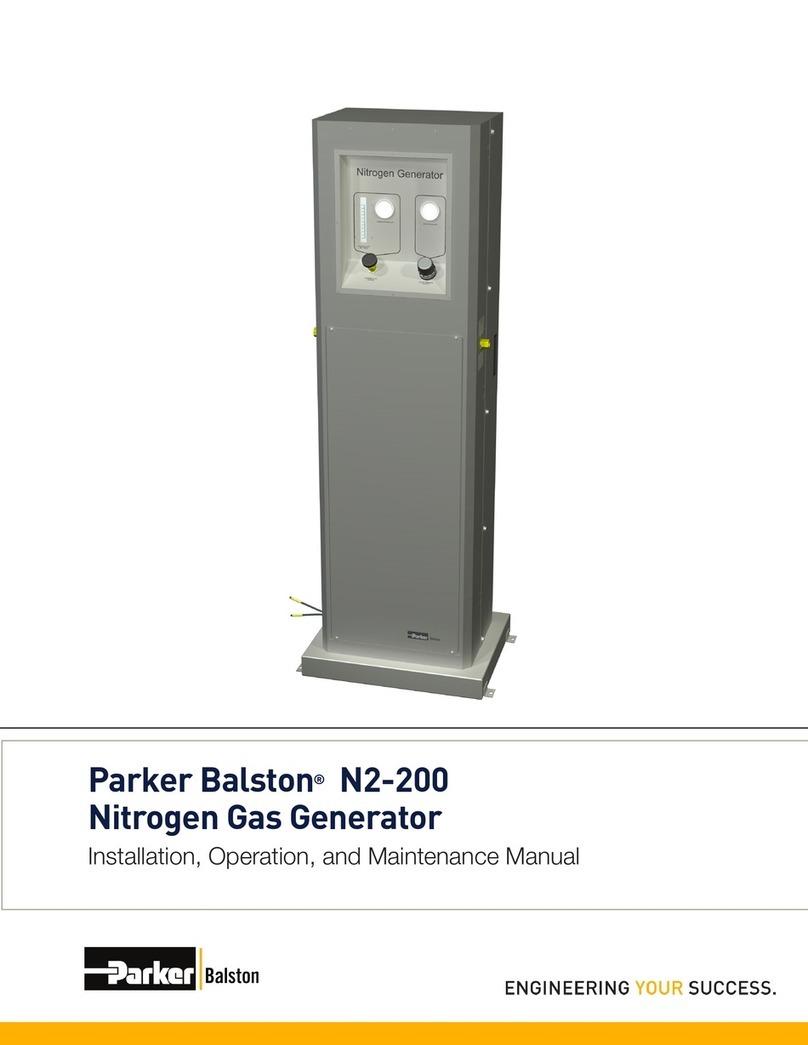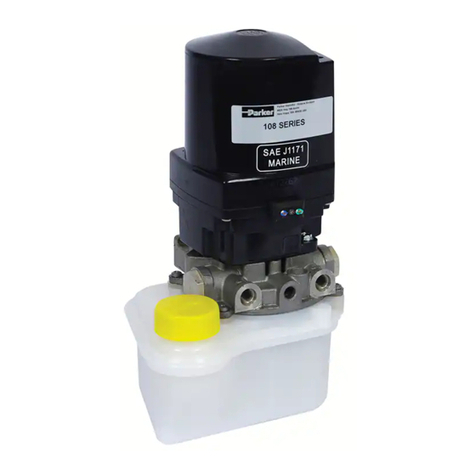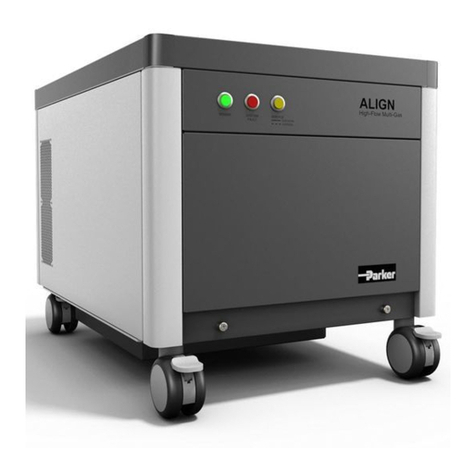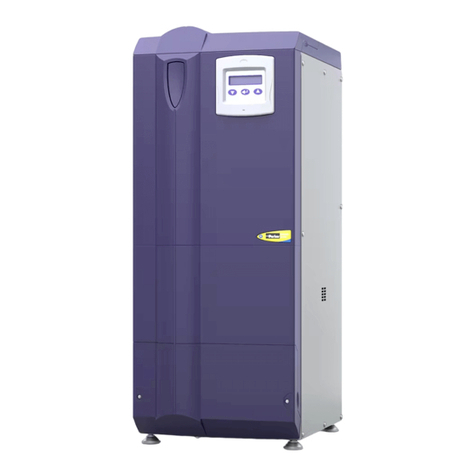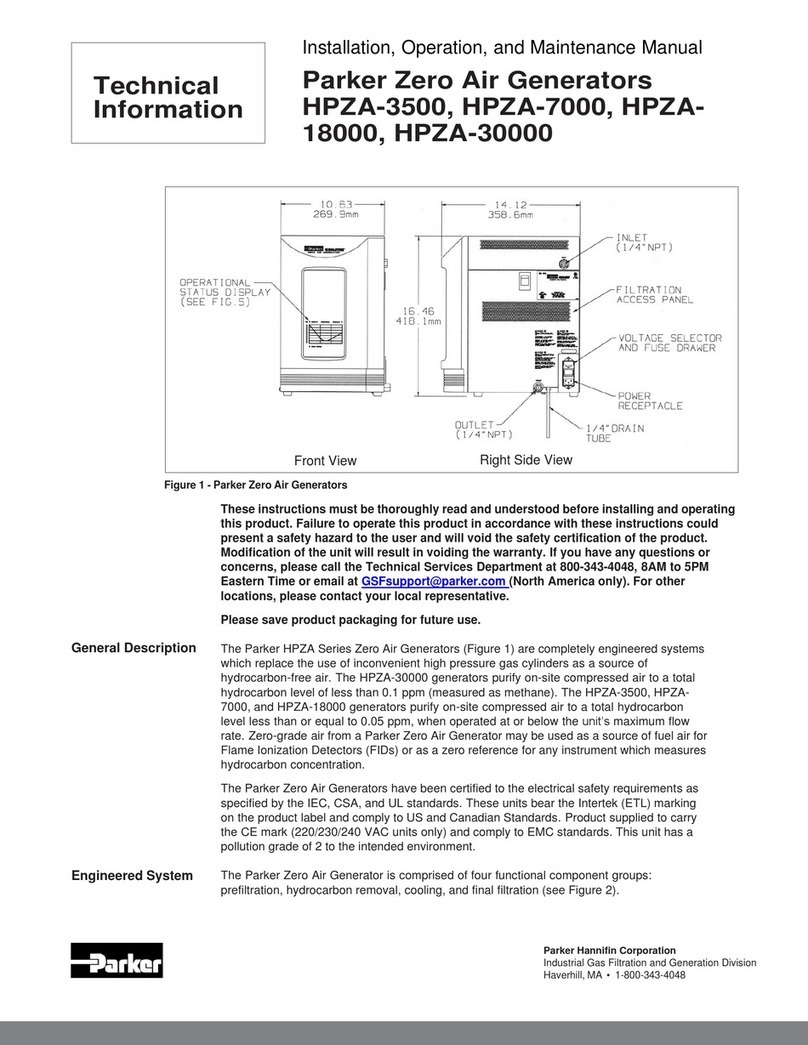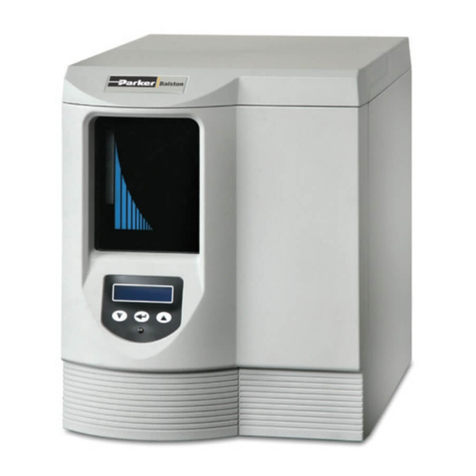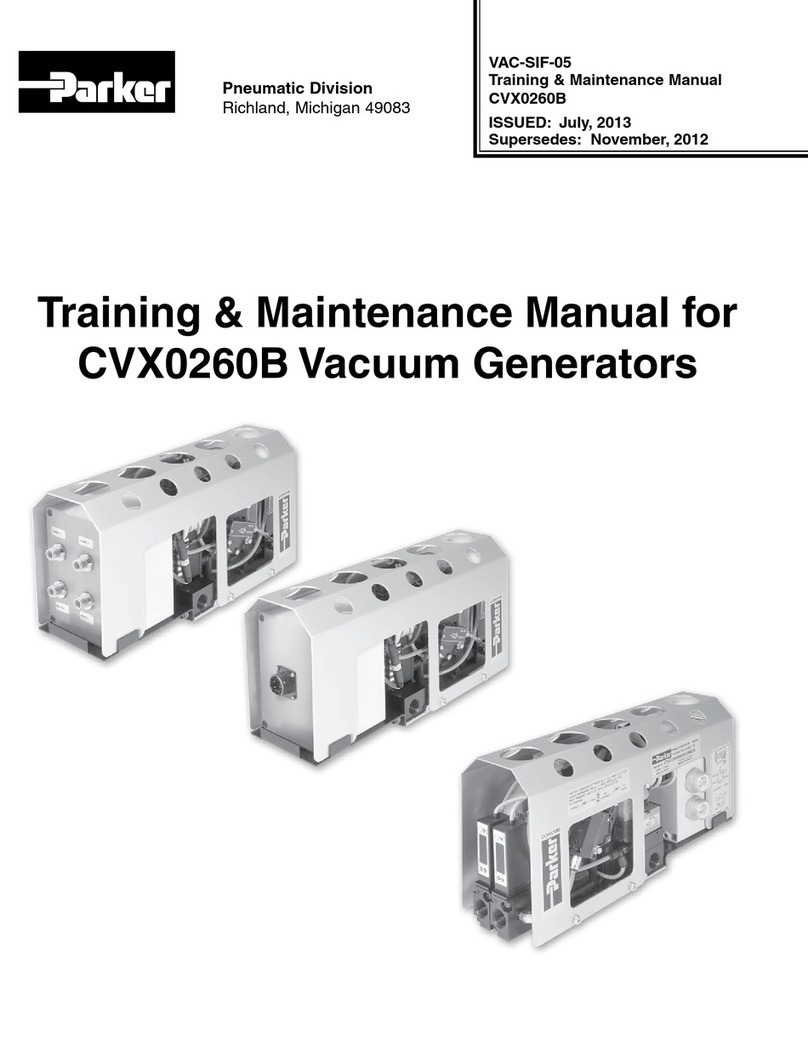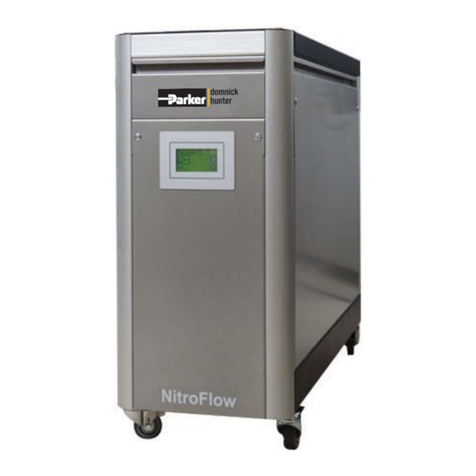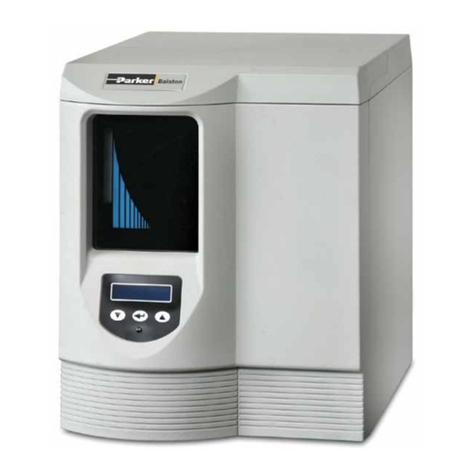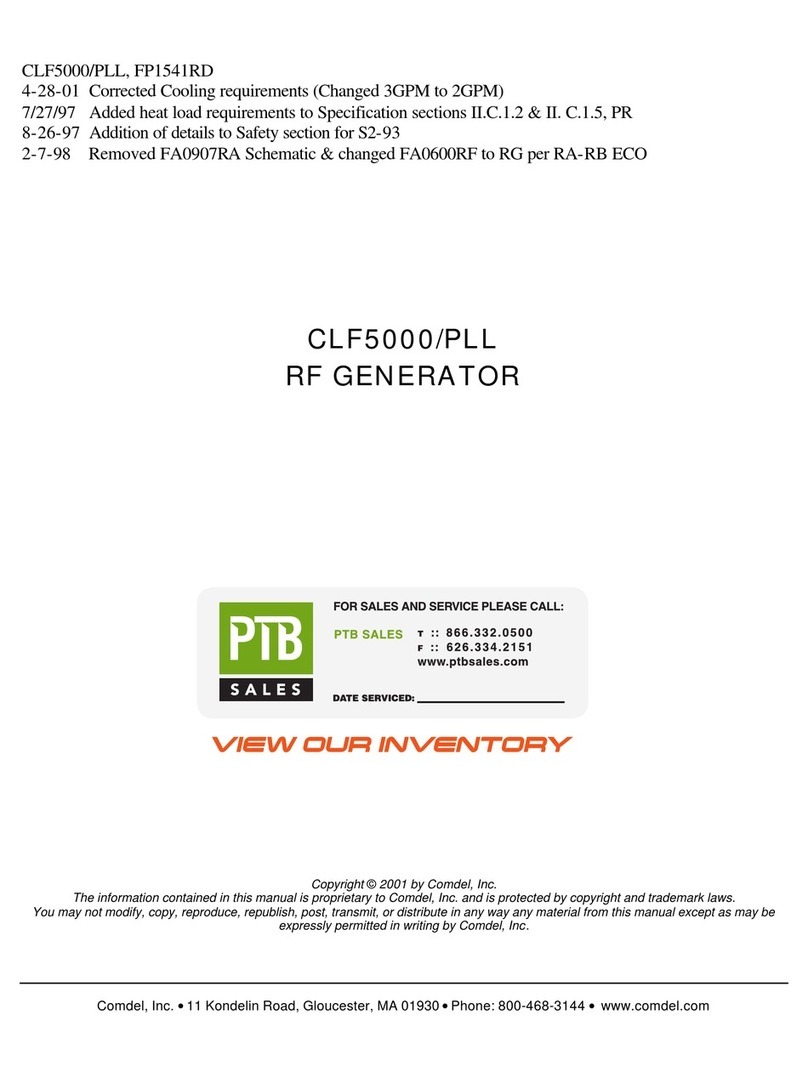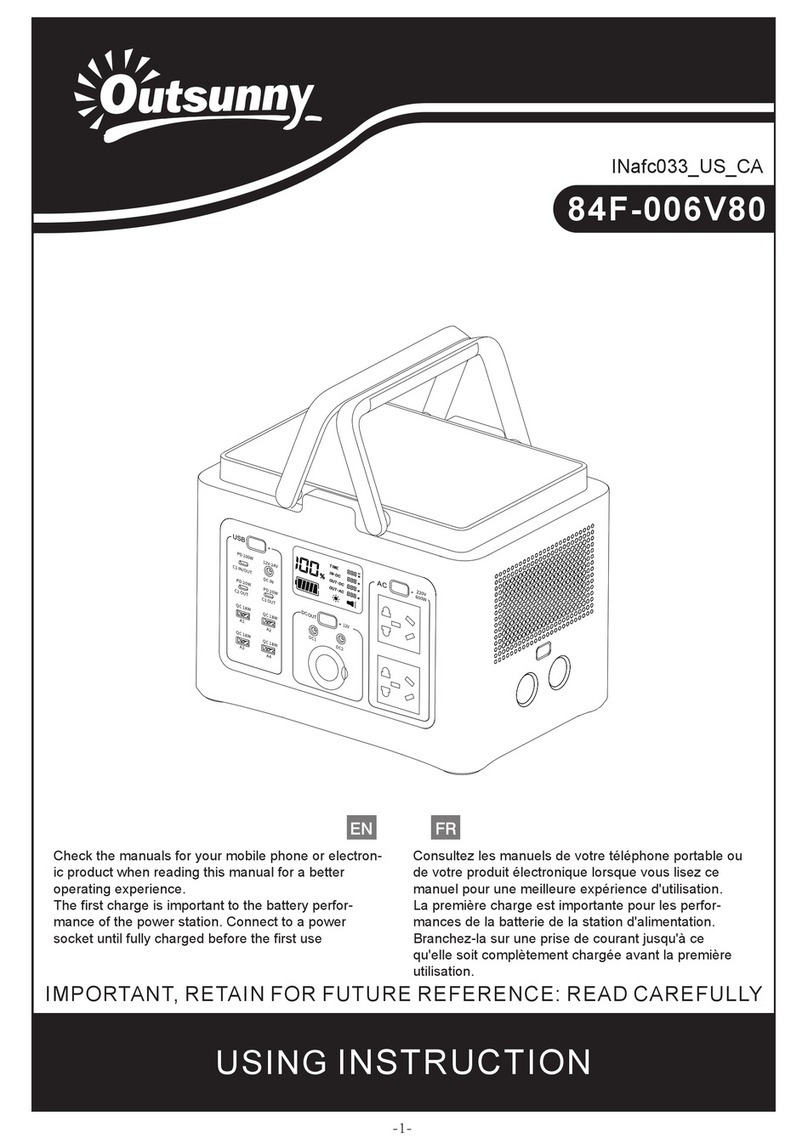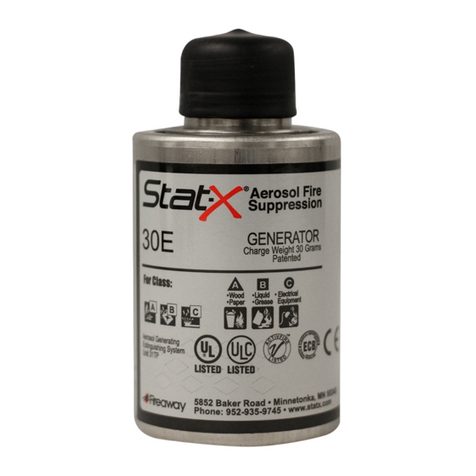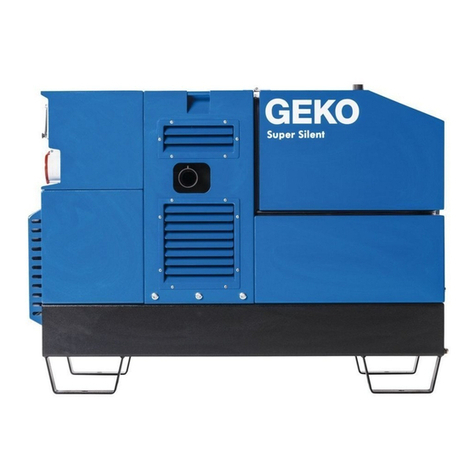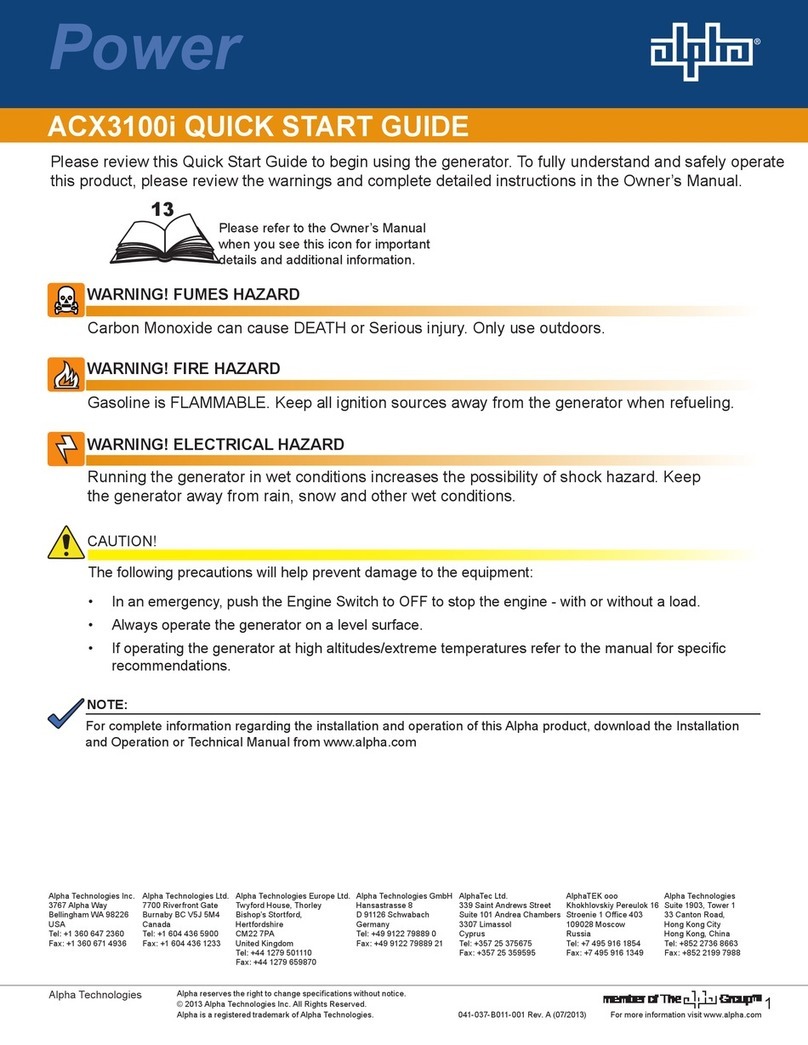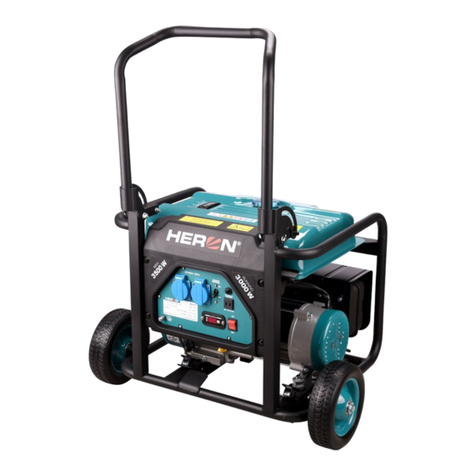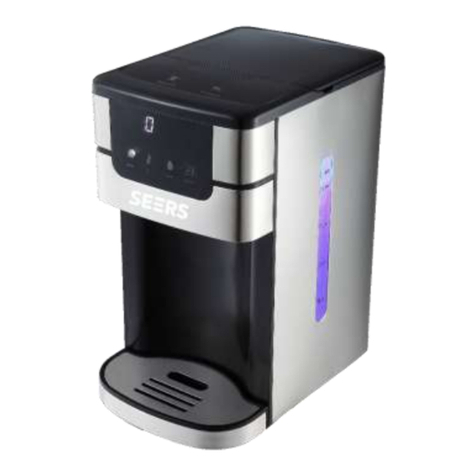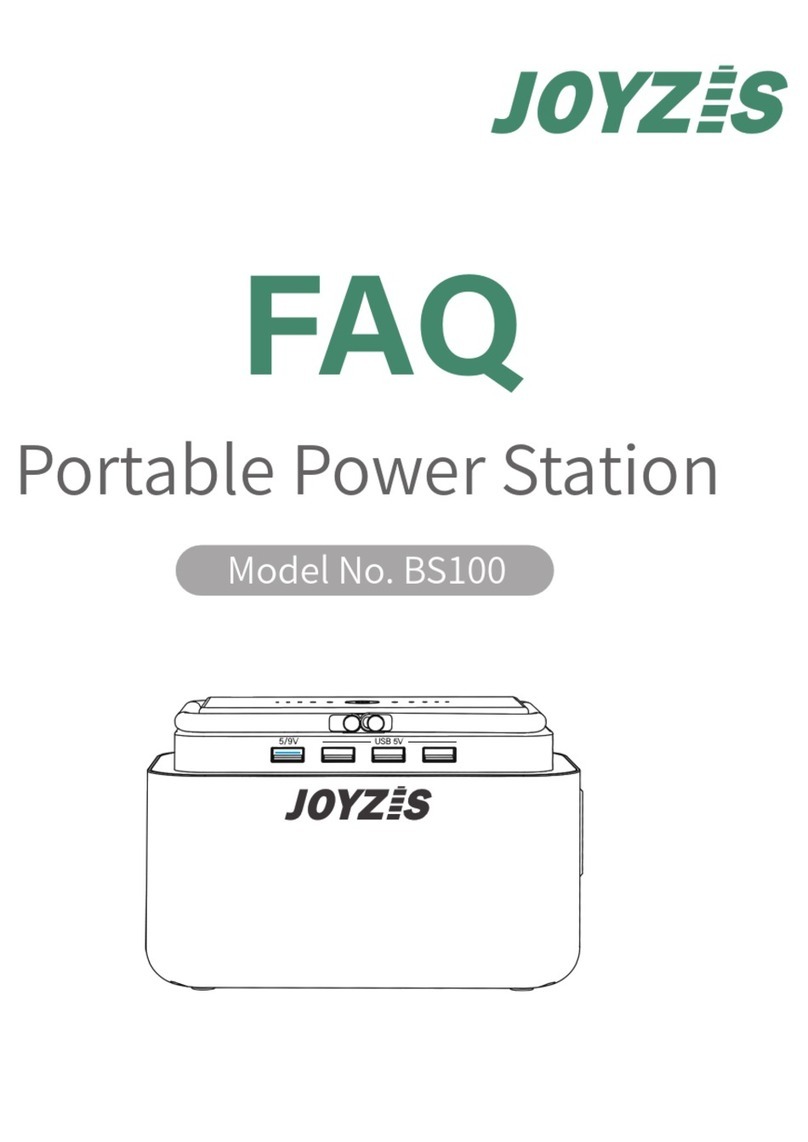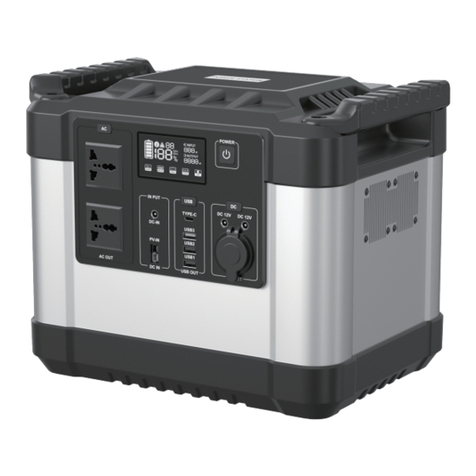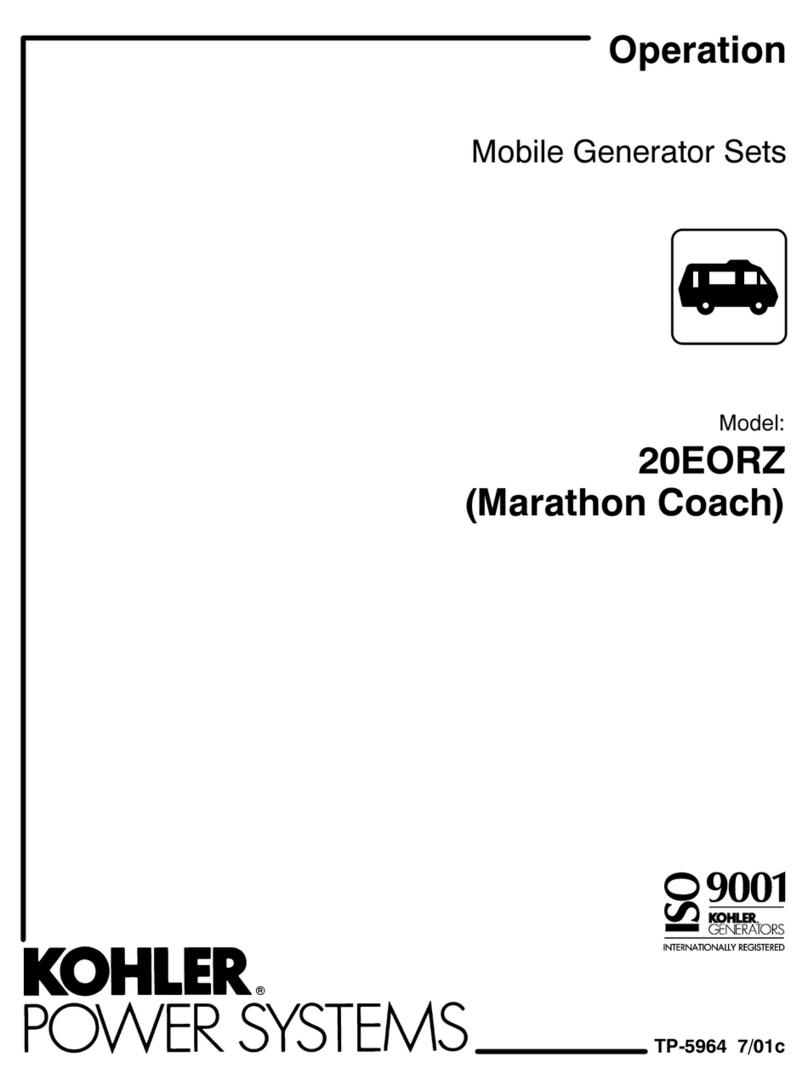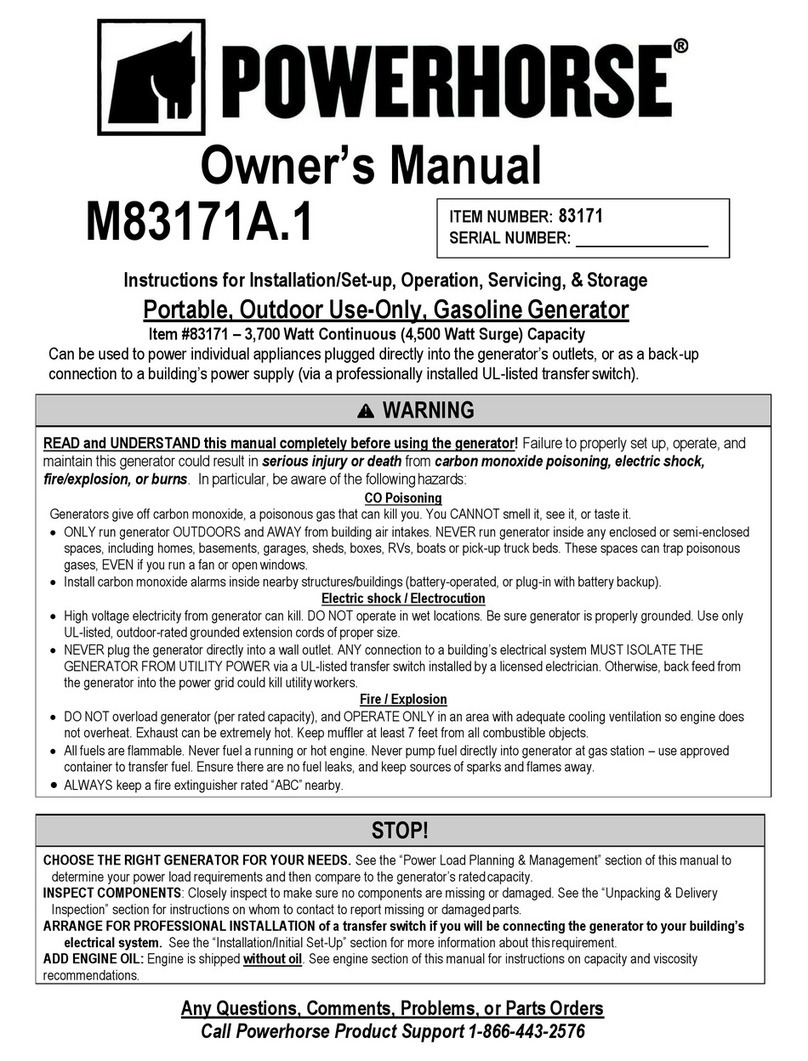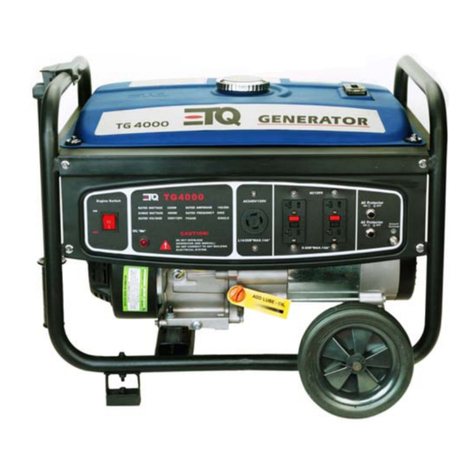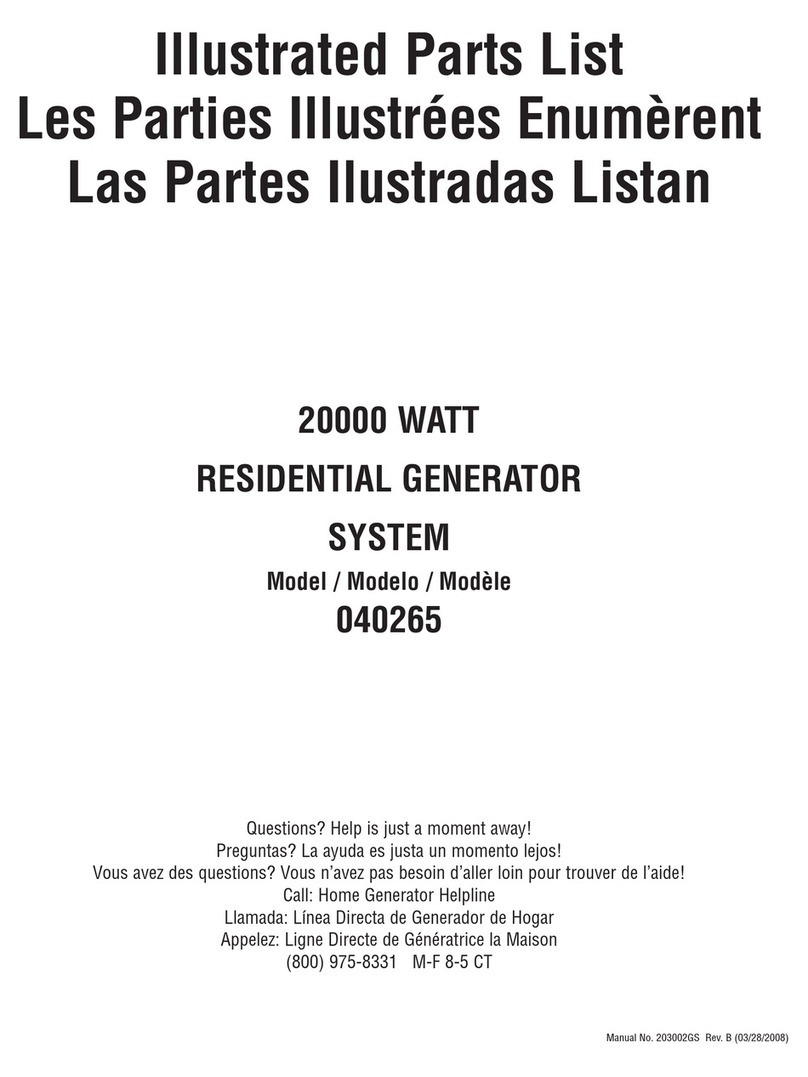
9
Bulletin HY22-3220A/US Instruction Manual
550 Series Hydraulic Power Units
Installation
Suitable applications for the 550 Series Power Units would be
those whose requirements fall within the operating parameters
given above.
Some examples of abnormal uses of this unit would include:
• Use of unit with higher pressure than that for which it was
rated
• Use requiring continuous running of the pump ow over the
pressure relief valve
• Use with higher or lower voltage than required for optimal
use
• Use in a mounting orientation other than that for which it was
designed
• Use of uids not recommended for use
Parker Hannin Corporation takes no responsibility for safety
of any unit if it is not used for the intended purposes detailed in
this Instruction Manual.
Preparation for Use
Unpacking and Checking
All units were carefully packed, in containers or boxes, and may
or may not be on skids. In any case, do not remove anything
from the skid or any packaging until it has been carefully
checked for damage that may have occurred in transit. Report
all damage immediately to the carrier and send a copy to the
vendor.
All open ports on the power unit were plugged at the factory to
prevent the entry of contamination. These plugs must not be
removed until just before piping connections are made to the
unit.
Storage
If the unit is not going to be installed immediately, it should be
stored indoors, covered with waterproof sheet, and all open
ports kept plugged. If long term storage is expected (6 months
or more) we recommend lling the reservoir completely with
clean hydraulic uid to prevent the entry of moisture.
Removing from packaging
The mass of 550 Series Power Units is unequally distributed
in the assembly. The electric motors are the ‘heavy ends’
of the power units with the standard motors alone weighing
between 8.3 kg (18.2 lbs) and 22 kg (48.4 lbs). It is strongly
recommended that two people carry and move these power
units. The exception is the 550 Series Power Unit using the 19
liter (5 gallon) rectangular steel reservoir. These are assembled
with the electric motor above the reservoir. 550 Series Power
Units with the 19 liter (5 gallon) rectangular steel reservoir should
be removed from the skid by wrapping a heavy duty nylon strap
around the base of the motor mounting feet. This strap should
be rmly secured to the lift truck forks when unit is lifted.
Installation
Locating Power Unit
The unit should preferably be installed indoors in a clean, dry
environment with an ambient temperature of 15 to 38°C (60 to
100°F).
Parker Oildyne products should not be installed where they are
at risk of objects falling from overhead or where there is any risk
of impact with external objects.
Mounting the power unit
The majority of 550 Series Power Units are complete
assemblies. A small portion is created without the electric
motors, allowing the customer to purchase and install alternate
motors. There is a ‘C-face’ kit available, Oildyne part number
775679, which allows a standard ‘56C with base’ motor to be
mounted to the 550 Series. This kit includes a spacer plate,
shaft adapter with set screw, threaded studs and nuts – all the
components needed to mount the motor to the power unit. See
the Appendix on page 18 for installation instructions using this
C face kit.
550 Series Power Units are assembled for mounting horizontally
(ports or D03 valve facing UP) or vertically (motor above the
reservoir), except for power units using the 19 liter (5 gallon)
reservoir, which are designed only for vertical installation (motor
above the reservoir).
For port locations see pages 4 - 6.
Mount the power unit securely through the provided slots in
the motor foot. See page 4 for the motor foot details. Power
units with the 19 liter (5 gallon) reservoir will use the reservoir
base anges to mount to the customer determined location.
See page 6 for reservoir mounting ange details. Mounting
bolt torque values will be determined by the type of fastener
selected by the customer. It is strongly recommended that
the surface to which the power unit is mounted is bonded
to earth to provide proper grounding in the event of a
lightning strike.
Electrical Service Connections
Connect the motor to the power source following good
practices as outlined in the national electric codes and any local
codes which may apply. Verify that the available voltage is the
same as the voltage identied on the label. Most AC motors
have dual voltage ratings, so verify that the leads in the conduit
box have been connected together as dened on the motor
nameplate to match the facility power source available. Ensure
the wiring connections will provide clockwise motor rotation,
when looking at the fan end.
Standard NEMA motor connections are shown here:
Single phase - 115/208/230 VAC
1 3 5 2 4 8
1 Ø, Low Voltage
2 3 5 4 81
1 Ø, High Voltage
Three phase - 230/460 VAC
If the 3 phase connection shown results in a counter clockwise
rotation (from the fan end), interchange any two of the three L1,
L2, L3 connections to reverse the motor rotation.
3 Ø, Low Voltage
TAPEL 3
4 5 63 9
L 1
1 7 2 8
L 2
1
L 1
2
L 2
3
L 3
4 7
TAPE TAPE
5 8
TAPE
6 9
Customer supplied controls will include motor starters and valve
operators (for NG6/D03 and solenoid cartridge valves).
Supply and Return Connections
550 Series Power Units incorporating an NG6/D03 valve
surface, regardless of the valve being supplied by Oildyne or
not, will include two JIC-6 (9/16-18) extensions ttings onto
which the A and B actuator control connections can be made.
Power units incorporating the P and T ports have two SAE-6
(9/16-18) female o-ring type ports to accept customer ttings.
Parker Hannifin
HPS Division
New Hope, MN 55428 USA
